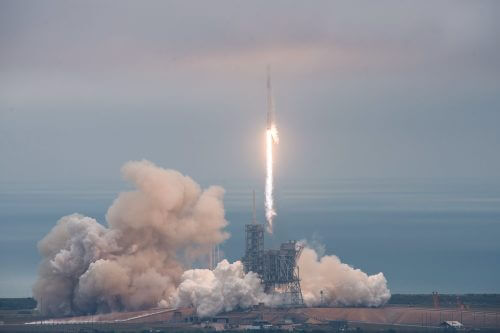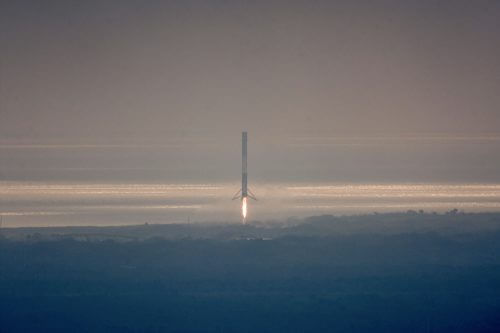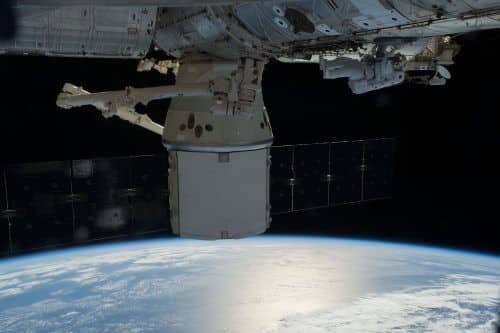Today, SpaceX launched the Dragon supply spacecraft to the International Space Station, in the company's second launch since last year's failure in which the Falcon 9 launcher exploded. The launch followed the historic launch at the Kennedy Space Center, from which the astronauts of the Apollo program were previously launched to the moon and the space shuttles. The successful launch also included a successful landing of the first stage.

Today, at 16:39 (Israel time), SpaceX launched its tenth Dragon spacecraft to the International Space Station. The unmanned spacecraft carries on board about 2.5 tons of supplies and scientific experiments for the International Space Station. The spacecraft will now begin a two-day journey in orbit around the Earth, during which it will adjust its trajectory to that of the space station, approach and connect with it via the station's robotic arm.
In addition to the successful launch, the company continued the successful sequence of returning the first stage of the launcher, which in the future the company intends to make reusable, thus saving on launch costs. In the live broadcast from cameras mounted on the first stage, it was possible to see first his free fall and then the rocket burns he performed to land vertically and safely, on a ground pad at the company's ground landing site, LZ-1, located at the Cape Canaveral Spaceport.
This is the first launch that SpaceX is carrying out from NASA's Kennedy Space Center in Florida, which is located near the Cape Canaveral Spaceport, where SpaceX has so far carried out launches from the East Coast of the United States.

The launch was made after the historic launch LC-39A, the same Spice X Rented From NASA for 20 years in 2014. After this launch, in the 60s and 70s, Apollo program pilots were launched to the moon, on top of launchers Saturn 5 the legendary. Yes, the launch was later converted to launch the space shuttles and was used by them until their retirement in 2011 (in photos of the launch site you can still see the collapsible service tower that served the space shuttles, and is not currently in use).
SpaceX intends to use the launch pad in the future also for the company's manned launches to the International Space Station, using the Dragon 2 spacecraft it is currently developing.
This is the second launch of the Falcon 9 launcher since then The explosion which happened during a static test in September last year, which also caused the destruction of the Israeli satellite Amos 6. The company has since carried out an intensive investigation which led to the focus of the failure on the helium tank in the second stage of the launcher. After fixing the fault, the company Back to activity About a month ago, when it launched 10 Iridium communication satellites at once.

Today's launch was carried out after it was postponed yesterday due to problematic data coming from a backup system of the nozzle adjusters of the second stage rocket motor. The company replaced the system and performed a number of tests that showed that it was working.
Among the scientific instruments that the Dragon spacecraft carries to the International Space Station, the device is included SAGE III It will monitor and accurately measure the amount of ozone, aerosols, nitrogen dioxide and water vapor in the troposphere and stratosphere.
Another device, the machine Raven, will test self-navigation technology for satellites and spacecraft, among other things to help NASA develop the Restore-L spacecraft mission that is planned to be launched in 2020 and will test the ability to service and refuel satellites in orbit around the Earth, with the aim of extending their life span.
Watch the landing moments of the first stage of Falcon 9:
https://www.youtube.com/watch?v=CP0ficDsOkE

One response
Elisef will be informed that the Dragon spacecraft has arrived at the International Space Station